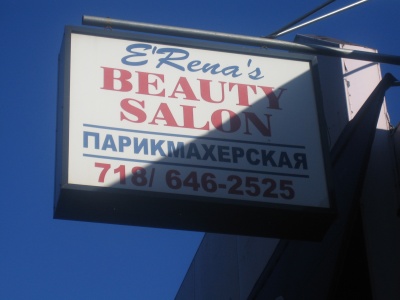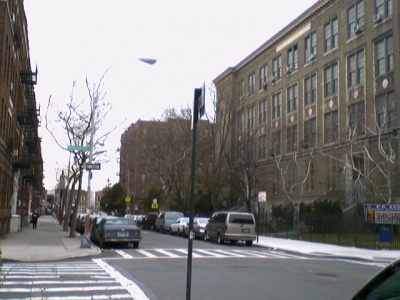Brighton Beach: Here v. There
From Decoding New York
| Introduction |
| Brighton Beach |
| * Evolution |
| * What's Real |
| * Here v. There |
| * Economy |
| Crown Heights |
| * Evolution |
| * What's Real |
| * Here v. There |
| * Economy |
| Comparison |
| * Photo Gallery |
| * Sources
|
Designed with families in mind, Brighton Beach is a perfect site for a relaxed summer day at the shore as families walk along the boardwalk and enjoy the mist of the ocean. A New York Times article of June 16, 1890 paints a portrait of the lifestyle of Brighton Beach in which “chiefly good middle-class Brooklynites- people who brought books and babies with them and sat on the smooth sand.” With subway service to Coney Island and Manhattan, rail lines to Brighton Beach were designed with stops accessible to middle-class Brooklynites.
Today Brighton Beach is home to the largest Russian community in Brooklyn, many of whom were attracted to “Little Odessa,” as Brighton became known, because it reminded these new immigrants of the city on the shore of the Black Sea in their mother country. The natural way Russian immigrants all flocked to Brighton Beach made it easy for them to assimilate there and call it there “home”. The population of Russian immigrants in Brighton Beach is greater than 150,000, which accounts for about eighty percent of the residents. The majority of émigrés who have made Brighton Beach their own over the past two decades are from the former Soviet Union: Uzbekistan, Georgia, Moldova, Ukraine and the other satellite republics. The prevailing language spoken in Brighton Beach is Russian. Russian is most commonly heard on Brighton’s boardwalks, bookstores, fruit stands, nightclubs, and restaurants that are located under the elevated train tracks on Brighton Beach Avenue, stretching from Ocean Parkway to West End Avenue. One can clearly see that Brighton Beach is a safe haven for newly arrived Russian immigrants. You can shop eat or go nightclubbing, but a popular activity is to head over to the cafes that are located near the boardwalk and between Fourth and Sixth Streets.
As in many other cultures, food is a force that reigns in Russian people. Competition amongst stores and cafés is raised every time a new store or café opens. Unlike Chinese or Italian food, which has been Americanized and turned into fast food and pizzerias, Russians stay loyal to the recipes they brought back from the motherland. The same cakes, meats and other delicacies are whisked together the same way they were in the home country. Although the ingredients are different, Russian people tend to ignore the slight changes and rely on the security that they found a home away from home, and their kitchen followed. Russians in Brighton Beach have not only recreated the food they eat, but they brought over the cultural aspects of their old lives over as well. With today’s advanced economic opportunities, business owners manage to import books and music straight from Russia. Russian immigrants would much rather read a book written by another Russian than a book simply translated into a language they could understand. Ticket booths can also be found throughout the neighborhood, as Russian performers are constantly flying in with entertainment visas to perform for their devoted fans who have moved to New York City.

